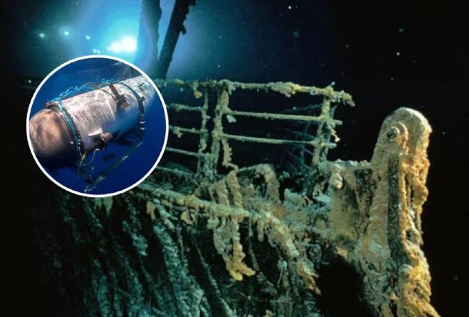Larry Connor, a real estate investor from Dayton, Ohio, is gearing up for a deep-sea dive to the Titanic shipwreck site, nearly a year after a tragic incident involving the OceanGate vessel.
Connor, along with Triton Submarines co-founder Patrick Lahey, plans to descend over 12,400 feet (3.78 kilometers) into the depths of the Atlantic Ocean in a two-person submersible.
Their expedition aims to demonstrate the safety of submersibles and revive confidence in deep-sea exploration following the OceanGate incident. Connor’s dive to the Titanic site will serve as a testament to the advancements in technology and safety measures within the industry.
The exploration of the Titanic wreckage holds historical significance and continues to captivate the public’s imagination. Connor’s venture represents a bold step forward in underwater exploration, reaffirming humanity’s enduring fascination with the mysteries of the deep sea.
“I want to show people worldwide that while the ocean is extremely powerful, it can be wonderful and enjoyable and really kind of life-changing if you go about it the right way,” Connor told the Wall Street Journal.
Lahey has designed a $20 million (2.6 billion) vessel dubbed the Triton 4000/2 Abyssal Explorer, which Connor said can carry out the voyage repeatedly.
The duo said they want to prove that the trek can be done without disaster — despite the implosion of the Titan submersible in 2023, which killed all five people on board, including OceanGate CEO Stockton Rush.
The Titan had been headed to the Titanic site when it suddenly had a “catastrophic implosion” on June 18.
Speaking about his submersible, Connor said, “Patrick has been thinking about and designing this for over a decade. But we didn’t have the materials and technology.”
“You couldn’t have built this sub five years ago.”
He also added that a few days after the tragedy, he called Lahey and urged him to build a better sub.
“You know, what we need to do is build a sub that can dive to [Titanic-level depths] repeatedly and safely and demonstrate to the world that you guys can do that, and that Titan was a contraption,’” Lahey told the paper.
The tragic incident involving the OceanGate vessel serves as a sobering reminder of the inherent risks associated with deep-sea exploration. Last year’s implosion of the Titan submersible, resulting in the loss of several lives, underscored the formidable challenges posed by the extreme pressures of the ocean depths.
While Larry Connor and Patrick Lahey are preparing for their own voyage to the Titanic wreckage site, they have not yet disclosed the timing of their expedition. This cautious approach reflects a commitment to ensuring thorough preparation and adherence to stringent safety protocols before embarking on such a perilous journey.
The ongoing investigation into the implosion of the Titan submersible highlights the importance of rigorous safety standards in deep-sea exploration. Concerns raised by individuals like David Lochridge underscore the critical need for transparency and accountability within the industry to prevent future tragedies.
As the quest to explore the mysteries of the deep sea continues, it is imperative that lessons learned from past incidents are heeded, and that safety remains paramount in all endeavors to unlock the secrets hidden beneath the ocean’s surface.



